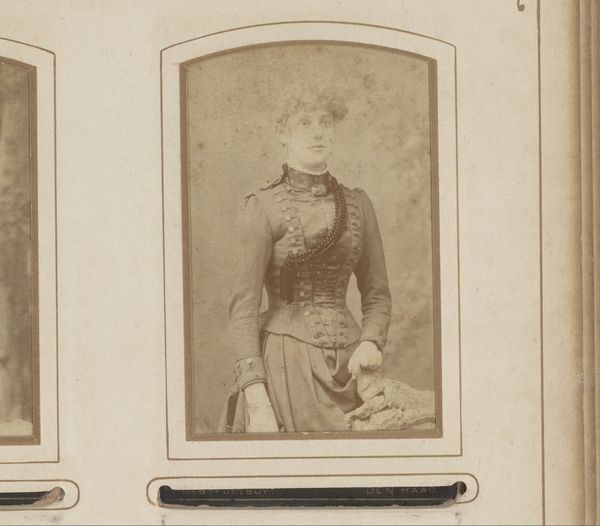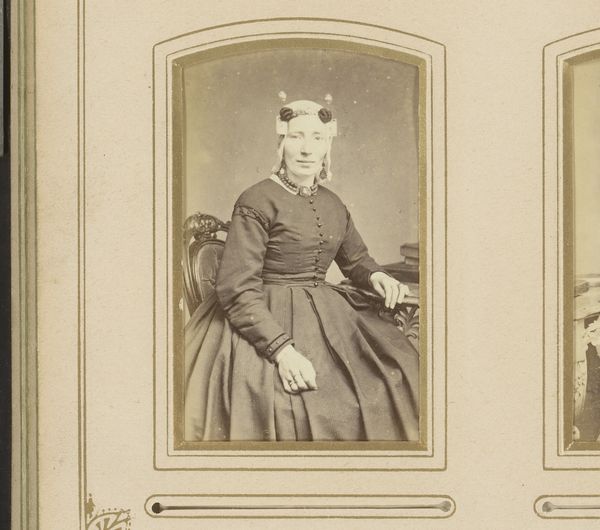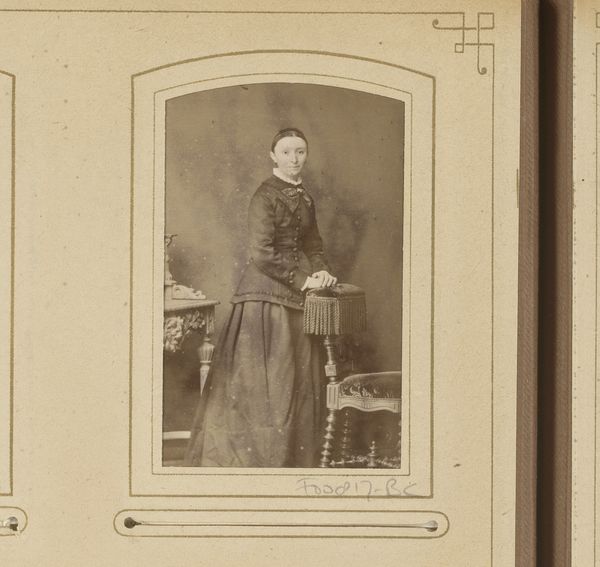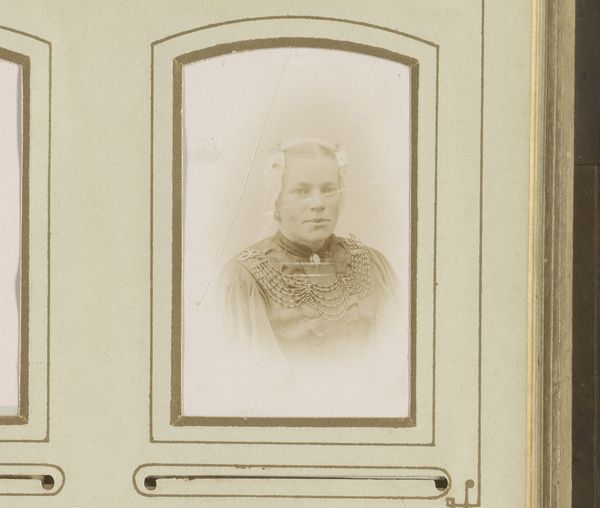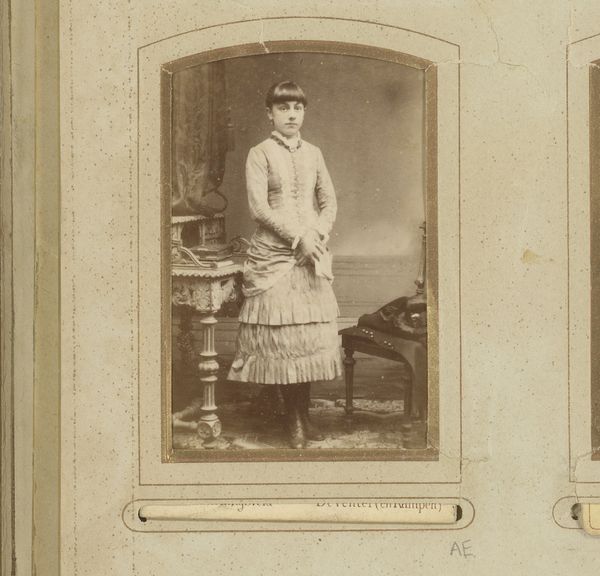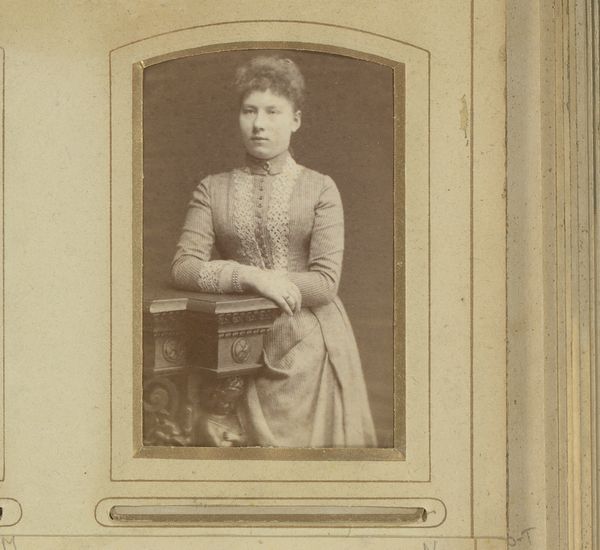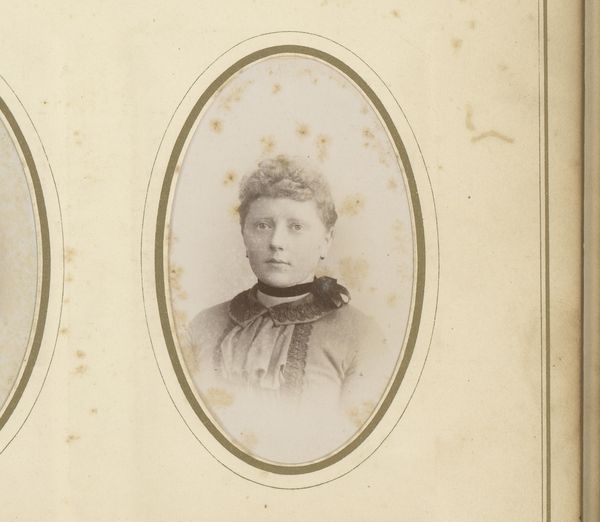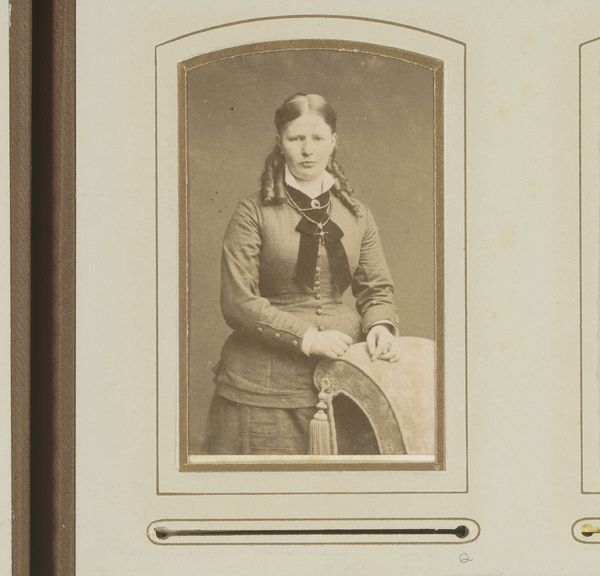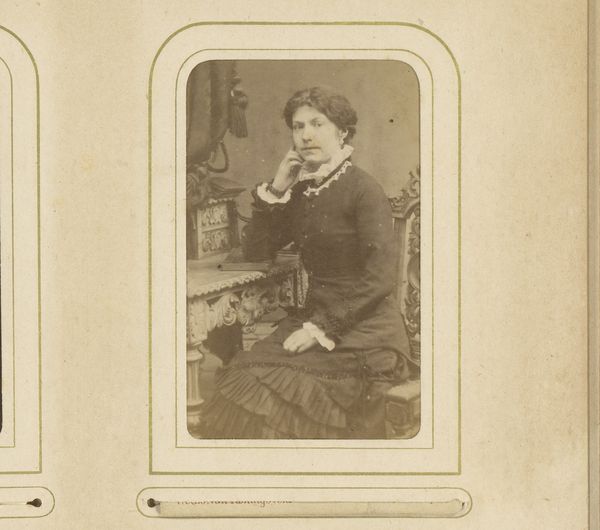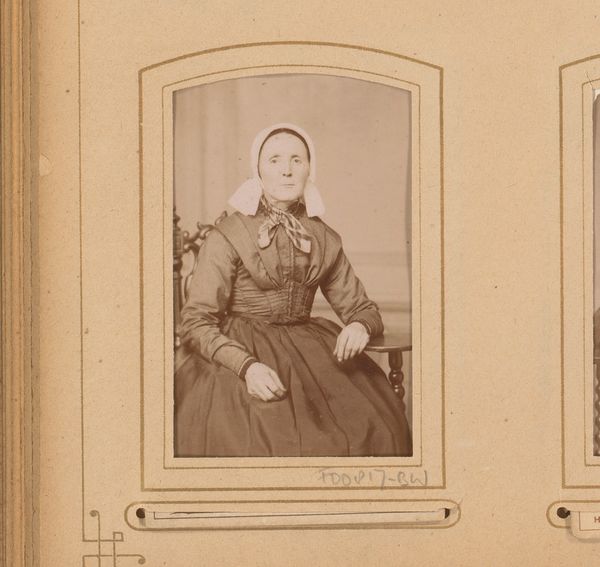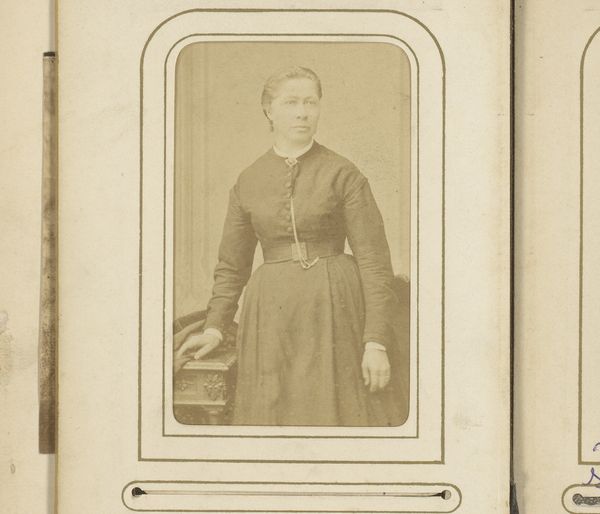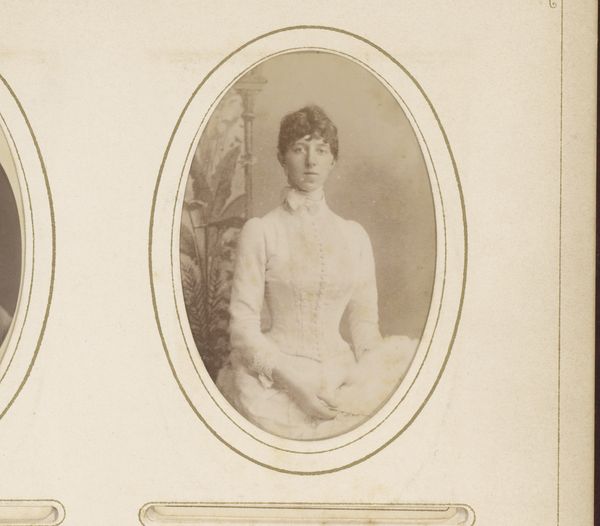
photography, gelatin-silver-print, albumen-print
#
portrait
#
aged paper
#
toned paper
#
photography
#
brown and beige
#
gelatin-silver-print
#
neutral brown palette
#
brown colour palette
#
albumen-print
#
realism
Dimensions: height 83 mm, width 52 mm
Copyright: Rijks Museum: Open Domain
Curator: This is a photographic portrait from the Rijksmuseum, attributed to the Delboy Brothers, titled "Portret van een vrouw", and it was made sometime between 1864 and 1886 using gelatin silver and albumen printing techniques. Editor: The sepia tones lend it a strong sense of nostalgia. Her gaze seems both direct and a bit hesitant. It's a fascinating window into the past. Curator: Indeed. The photographic processes involved—the albumen print and the gelatin silver print—reveal a great deal about the era's technical capabilities and the labor involved in image production. Each step, from preparing the glass plate to the final print, was a deliberate, material act. Editor: Absolutely. And thinking about her clothing and demeanor, I'm drawn to what this portrait might tell us about the sitter's identity and social position. What choices was she making in how she presented herself to the world, within the constraints of Victorian society? Curator: Those "constraints" are key. Consider the limited availability of photography to working class or poor communities at that time; this image speaks volumes of her access to participate in then contemporary culture and possibly leave a legacy for herself. This form of photographic production was a privilege of the emergent bourgeoise, reflective of consumption patterns and societal norms regarding memorialization of their existence. Editor: It makes you wonder about the story behind the portrait. Was it a commission? A gift? And how does it speak to the limited, yet evolving role of women in the public sphere during the late 19th century? Curator: And don't forget, images such as these were initially sold at varying price points with consideration of printing medium and framing as primary influencers, meaning, again, that cost would place a role in allowing or preventing this photograph to enter one's household as an available, relatable image. The very availability, distribution, and consumption are indicative of the Delboy Brother's process, the subject's class, and our means of engaging with this history in material ways today. Editor: Looking at it through that lens of accessibility reveals an almost democratizing element within photography, that the Delboys and similar artists could introduce image to populations not normally portrayed through traditional artistic practice of portraiture. Curator: Precisely. And analyzing those processes sheds light on production that moves our contemporary engagement into more direct correlation with the original production's labor dynamics. Editor: That gives me so much to think about, and moves me toward a completely different perspective on this quiet, reflective work. Curator: Indeed; it has a far louder, more engaging tale to tell if you’re ready to look.
Comments
No comments
Be the first to comment and join the conversation on the ultimate creative platform.
